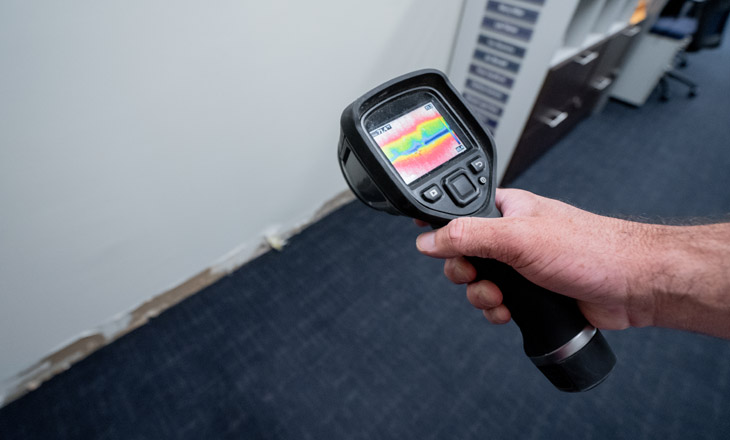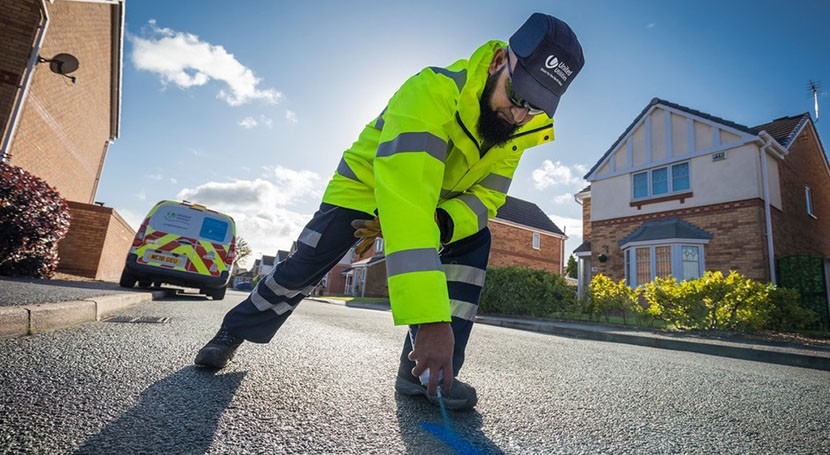Just How Professional Water Leak Detection Can Save You Money and Stop Damages
Just How Professional Water Leak Detection Can Save You Money and Stop Damages
Blog Article
Cutting-edge Solutions for Very Early Discovery of Water Leaks in Structures and Facilities
As the integrity of structures and framework is extremely important, the difficulty of very early detection of water leakages has spurred cutting-edge options that promise to reinvent the way we secure versus potential problems. From advanced leakage detection innovations to the release of IoT sensors for real-time tracking, the landscape of leakage prevention is advancing quickly. Artificial intelligence formulas offer a peek right into the future of leakage prediction, while thermal imaging offers a non-intrusive method for pinpointing concealed leakages. Automated water flow analysis systems are reshaping just how leaks are determined and attended to, leading the way for a positive strategy to water leak detection. Each of these solutions holds the vital to guaranteeing the reliability and longevity of our developed atmosphere, motivating a change towards an extra lasting and effective future.
Advanced Leakage Discovery Technologies
Advanced leakage discovery modern technologies, outfitted with sophisticated sensing units and algorithms, play a critical duty in promptly determining and identifying water leakages in various settings. These technologies employ a mix of acoustic, thermal, and electro-magnetic sensing approaches to discover leakages accurately. Acoustic sensing units find the noise of getting away water, enabling for accurate localization of the leak resource. Thermal imaging identifies temperature level modifications caused by water leak, supplying another effective approach for leakage identification. Electromagnetic sensing units can determine changes in electro-magnetic fields caused by water, supplying yet an additional layer of leak discovery ability.

IoT Sensors for Real-Time Monitoring
In the realm of contemporary water leakage discovery, the assimilation of IoT sensors for real-time tracking stands for a pivotal development in boosting aggressive leakage discovery capabilities. These sensors provide continual tracking of water systems, supplying real-time information on water circulation prices, stress variants, and temperature level adjustments. By leveraging IoT technology, these sensors can spot even the smallest anomalies in water usage patterns, allowing early recognition of possible leakages prior to they intensify right into major problems.
IoT sensing units transfer information to a central system, where sophisticated algorithms evaluate the information and generate alerts or notifications when irregularities are spotted. This real-time tracking capability allows residential property proprietors or facility managers to promptly deal with leaks, minimizing water damages, lowering repair service expenses, and conserving water sources.
In addition, IoT sensors can be integrated with structure administration systems, enabling automated responses to identified leakages, such as shutting off water valves or turning on pumps to alleviate the impact of leakages. Generally, the implementation of IoT sensors for real-time surveillance substantially enhances the efficiency and performance of water leak discovery in buildings and framework.
Equipment Knowing Algorithms for Leakage Forecast

One key advantage of making use of artificial intelligence for leak forecast is its capability to constantly find out and enhance its precision in time. As even more information is collected and fed right into the algorithm, it can improve its predictions and adjust to altering problems, eventually increasing the integrity of leak discovery systems.
Furthermore, device learning formulas can help in recognizing subtle indicators of leaks that might go unnoticed by standard tracking methods. water leak detection. By examining complex information collections in real-time, these algorithms can give early cautions and signals, permitting prompt treatment and preventive upkeep to mitigate prospective water damages and associated costs
Using Thermal Imaging for Leak Detection
Thermal imaging innovation uses an encouraging strategy for spotting water leaks in various systems and infrastructures. By using infrared radiation and temperature variations, thermal imaging cams can recognize surprise leakages that are not quickly noticeable to the naked eye.
One of the essential advantages of thermal imaging for leak detection is its non-intrusive nature. Unlike conventional methods that may require damaging right into wall surfaces or floors to locate leakages, thermal imaging permits for non-destructive screening. This not only saves time and reduces costs yet additionally reduces disturbance to the building or facilities being examined. In addition, thermal imaging can quickly scan large areas, supplying a comprehensive introduction of prospective leak sources in a prompt manner. Generally, making use of thermal imaging innovation enhances the efficiency and precision of water leak detection, useful source making it a valuable device for preserving the integrity of structures and facilities.
Automated Water Circulation Analysis Equipments
Exactly how can computerized water flow evaluation systems revolutionize the discovery and monitoring of leakages in various systems and frameworks? Automated water flow evaluation systems offer a positive approach to leakage detection by continuously monitoring water flow prices and patterns. By important source establishing baseline information, these systems can rapidly determine discrepancies that might indicate a leak, making it possible for prompt intervention to avoid comprehensive damage.
These systems use innovative algorithms to examine real-time information and provide instant signals when anomalies are found, permitting quick activity to be taken. In addition, automated water flow evaluation systems can be incorporated with structure management systems or IoT platforms, improving overall effectiveness and allowing remote surveillance capabilities.
Furthermore, the information accumulated by these systems can be made use of for anticipating upkeep objectives, aiding to determine prospective weak factors in the facilities before leaks occur. Generally, the execution of automatic water circulation analysis systems can substantially enhance leak detection and management techniques, ultimately leading to set you back financial savings, minimized water waste, and increased sustainability in structures and framework.

Verdict
Finally, the integration of advanced leak detection innovations, IoT sensors, device understanding formulas, thermal imaging, and automated water flow analysis systems supplies ingenious options for very early detection of water leakages in buildings and facilities. These modern technologies make it possible for real-time surveillance, forecast of leakages, and effective detection approaches to avoid water damage and wastage. Applying these remedies can aid in keeping the stability and useful source sustainability of water systems in various settings.
Report this page